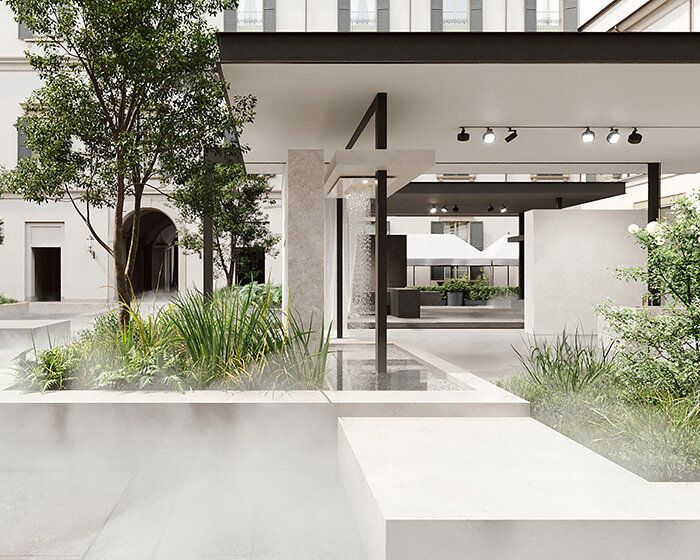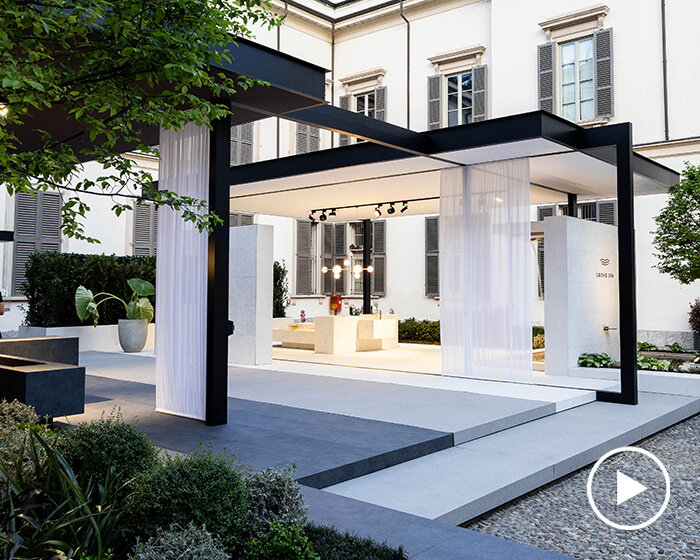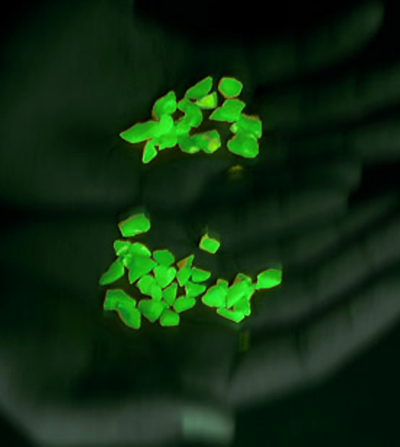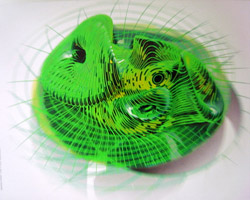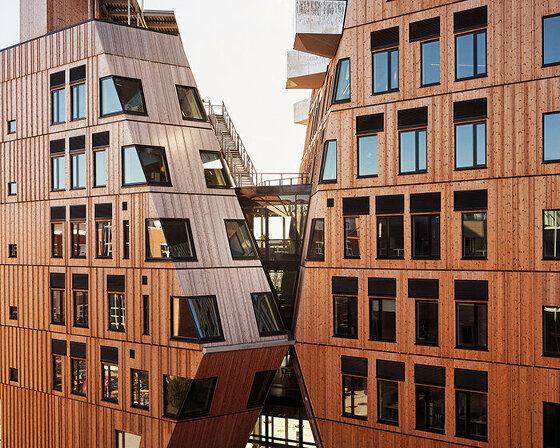KEEP UP WITH OUR DAILY AND WEEKLY NEWSLETTERS
happening now! dive into a week-long celebration of GROHE SPA’s immersive ‘aquatecture’ installation at milan design week 2024 in designboom’s video interview.
PRODUCT LIBRARY
snøhetta's newly completed 'vertikal nydalen' achieves net-zero energy usage for heating, cooling, and ventilation.
the apartments shift positions from floor to floor, varying between 90 sqm and 110 sqm.
the house is clad in a rusted metal skin, while the interiors evoke a unified color palette of sand and terracotta.
designing this colorful bogotá school, heatherwick studio takes influence from colombia's indigenous basket weaving.
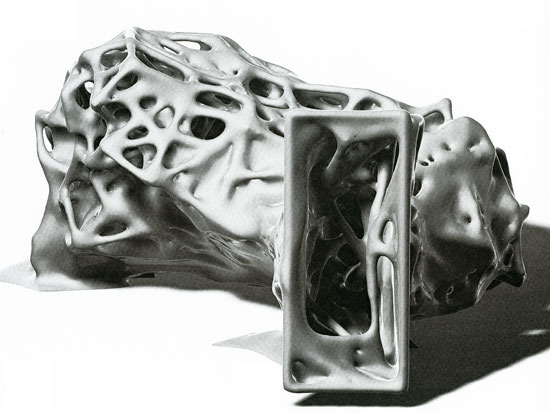
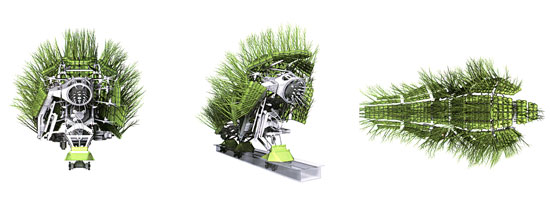 the robot for collection of biomass, and view of the building: the concrete threat of weapons and minefields, from which humans are barred, has made the demilitarized zone (on the north korea-south korea border) a natural oasis. this absence represents the fundamental theme of the project, whose open spaces are crossed only by the biomorphic robot used for the collection and scattering of grass, leaves, branches and other items from the forest.
the robot for collection of biomass, and view of the building: the concrete threat of weapons and minefields, from which humans are barred, has made the demilitarized zone (on the north korea-south korea border) a natural oasis. this absence represents the fundamental theme of the project, whose open spaces are crossed only by the biomorphic robot used for the collection and scattering of grass, leaves, branches and other items from the forest.
 a view of the demilitarized zone and position of the project
a view of the demilitarized zone and position of the project


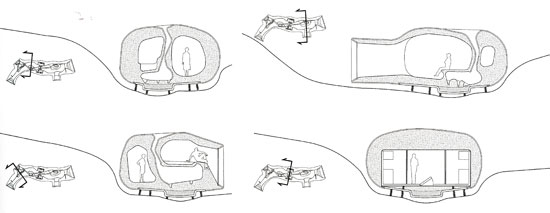
 interior of the trap: the choice to use polyethylene fabric, made with the came bottles used for the homemade traps, underlines the dual connection between the theme and its local interpretation.
interior of the trap: the choice to use polyethylene fabric, made with the came bottles used for the homemade traps, underlines the dual connection between the theme and its local interpretation. diagram with the positioning of the trap and interior view
diagram with the positioning of the trap and interior view
 virtual model: this transformable building reacts to the rhythm of the seasons in the winter it appears like a solid cutout of ice and snow, with cavities similar to those found in glaciers. in the summer it resembles the piles of stones used in these areas to mark borders. a small pool collects rainwater and supplies it to the artificial snowmaking system the phase of transformation of the water thus becomes an integral part of the building.
virtual model: this transformable building reacts to the rhythm of the seasons in the winter it appears like a solid cutout of ice and snow, with cavities similar to those found in glaciers. in the summer it resembles the piles of stones used in these areas to mark borders. a small pool collects rainwater and supplies it to the artificial snowmaking system the phase of transformation of the water thus becomes an integral part of the building. front cover
front cover